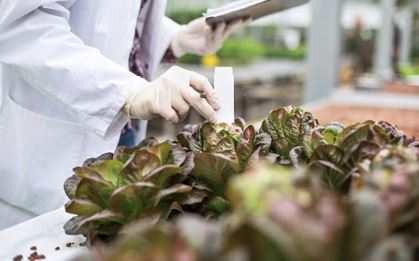Vertical farms have been heralded as the future of farming. But what can you actually grow in them? We take a look at some of the most common crops and where vertical farming may be heading.
Vertical farming quick wins: leafy greens
Having that controlled environment also means that you can often produce crops with a superior flavour, by giving them exactly what they need. (Even if in some cases that means stressing them to increase the flavour, like with rocket.)

Common crops include:
-
Lettuce
-
Chard
-
Cabbage
-
Rocket
-
Kale
-
Collard greens
Growing herbs in a vertical farm
Basil is particularly popular with vertical farmers, as it’s in demand all year around. It also needs relatively high temperatures, so can’t be grown outdoors in the UK for more than a few months of the year. Basil does well when grown hydroponically as it ends up with a higher concentration of oils, which intensifies the flavour.
-
Basil
-
Mint
-
Chives
-
Parsley
You can also grow slow-turn herbs, such as oregano and rosemary. While you won’t have as much produce to sell, you can charge more per kilo.
Packing in the microgreens
Cannabis and other medicinal crops
There are still relatively few growers compared to other crops, so it can be a lucrative business.
Soft fruit
Flowers
Fast-turn or slow-turn?
There are advantages and disadvantages to both fast-turn and slow-turn crops. Different crops have different requirements and price points, but generally speaking:
Slow-turn crops…
-
Bring in a higher price (particularly certain crops, eg medical-grade cannabis)
Fast-turn crops
-
Result in more harvests each year
-
Are less risky. If one crop fails you only have to wait weeks, rather than months, for the next harvest
-
Tend to be easy to grow
-
Are susceptible to pests outdoors so can bring in an organic premium
How many types of crops to grow in a vertical farm
Come again?
The future of vertical farming crops
Deciding what vertical farming crops to grow
-
How reliable is the crop?
-
Is there a UK demand for it all year around or will I need to export some produce?
-
Would it make sense to freeze it onsite?
-
How will I get my product to the buyer?
-
Should I grow one type of crop or different ones at different times of the year?
-
Does it justify the extra cost of growing indoors?





